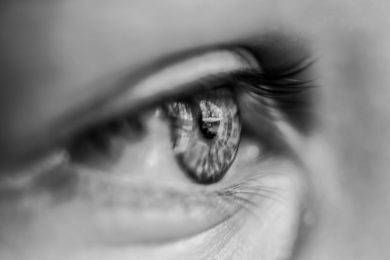Light is all around us, all the time, but how many of us really know what light is, or how it works?
How does light move so fast? Why does sunlight produce a rainbow after a storm? How does a camera focus? These questions and more are all answered by the science of optics.
Optics is the study of the physics of light. Those who study optics know all about how light moves. Over the centuries, these scientists have discovered many fascinating and surprising facts about light.
Read on to learn five surprising things about optics!
1. Diamonds Are Shaped to Increase Refraction
If you were asked to imagine a diamond, most of us would imagine the iconic cut diamond shape, with the pointed bottom, angled sides, and flat top. Most diamonds are cut to this shape.
But it isn’t as though diamonds form in this shape naturally. When they come out of the ground, they look like a translucent rock.
So why are all diamonds shaped this way?
It turns out this shape was first invented by an engineer who came from a family of jewelers. He ended up returning to this family business after learning about optics during the course of his studies.
He was able to determine a shape that maximizes the amount of light that returns through the top of a diamond.
This shape is known as the brilliant cut. It has 57 facets. When light enters a brilliant cut diamond, those 57 facets are designed to bounce the light around inside the stone as much as possible. The light is bounced through refraction, the property of light that allows it to be bent when it passes through a lens.
The more light bounces, the more sparkle is registered on the human eye.
2. Lenses Change the Speed of Light
A lens is any transparent material with a curved surface. Even a droplet of water is a lens.
When light passes through a lens, it is bent. This bending is called refraction. If you have ever noticed how a straight straw appears bent when placed in a glass of water, then you have witnessed the principle of refraction in effect.
But how do lenses bend light?
Well, light is actually made up of physical particles called photons. Photons, like any other physical material, can be slowed down. While visible light is always very fast, it only achieves “light speed”, about 186,000 miles per hour, in a vacuum.
Light that passes through diamond can be slowed down to 78,000 miles per hour, a 41% reduction of speed!
Because lenses are curved, the rate of slowing happens gradually and leads light along the path of least resistance. Light that hits near the edge of the lens will be curved most sharply, while light that hits the center of the lens will pass through straight.
When the light exits the lens, it resumes normal speed but continues along its altered course. This is why the light that hits your eyes after it passes through your glasses looks different than the light you see with your naked eye.
If you ever get laser eye surgery, tight tolerance lenses will bend the light so accurately it will hit your sensitive corneas at the perfect angle.
3. Humans Only See A Tiny Portion of Light
If you look at a chart of the light spectrum, you’ll notice that visible light makes up only a tiny fraction. The majority of light is invisible to human eyes.
Radio waves are actually a form of light, one which is invisible to humans. X-rays and gamma radiation are also forms of invisible light.
And while humans can see all the colors of the rainbow, and all the countless colors that result from mixing those colors, we can really only see three colors in the visible light spectrum: red, green, and blue.
Our retinas have three types of color-sensing cones on them. They each see one of these three colors, and all other colors we see are mixtures of them. COlorblindness occurs when these cones don’t communicate properly.
Some creatures have cones that see colors humans can’t imagine. The mantis shrimp, for example, has 16 different types of cones! They can see 13 colors that no human has ever witnessed.
4. The Sky Is Blue Because of Scattered Light
As anyone who has played with a prism knows, the white light of the sun is actually a combination of all the light in the visible spectrum.
After a storm, raindrops in the air act as a prism and create a rainbow. The colors of the rainbow, as you might remember learning in elementary school, follow a specific order: ROYGBIV, or red, orange, yellow, green, blue, indigo, and violet. These colors are always in this order because they appear from the fastest light, red, to the slowest light, violet.
Violet light is the slowest because the photons, or light particles, at the point in the spectrum have the shortest wavelength, meaning they move zig-zag as they travel at a high rate, rather than moving in a straight, efficient line.
As the white sunlight enters the earth’s atmosphere, all of the colors are scattered by particulate in the air. Colors with short wavelengths are scattered the most due to the extra motion in their trajectory. So while red light has already hit the earth’s surface, violet light is still bouncing around in the sky.
So why isn’t the sky violet? That’s because the cones in our eyes are more sensitive to blue light.
5. The First Camera Was Just a Hole in the Wall
Today, cameras are pieces of advanced technology, with hundreds of working parts and computer chips inside them.
But the first camera was nothing more than a simple hole in the wall!
It was known as a camera obscura. Usually, they would be a tent with a small hole cut in one side, although permanent camera obscuras exist as well.
When the room or tent is darkened on a sunny day, the sunlight that passes through that small hole will suddenly seem very bright. As the light passes through the small hole, something amazing happens. It projects a perfect image of the outside world onto the opposite wall of the room! The only thing is, the image is upside-down.
When light enters a room through a regular window, it is moving in countless directions, creating regular white sunlight. But the tiny window of the camera obscura allows in only a beam of light, which moves in a straight line. When the unscattered light hits the wall, it creates a magical image.
6. It Is Possible for Humans To See UV Light
Most humans can’t see ultraviolet light because the lenses in our eyes filter it out. This bit of UV protection is nature’s way of protecting our delicate retinas from sun damage.
Some people claim that after they had a lens removed, they were suddenly able to see new colors they had never noticed before. A famous example of this is Claude Monet, the famous painter.
After he had cataract surgery, his paintings suddenly began to feature heavy reds and blues, which some speculate was his attempt to paint the strange new colors he now saw.
Optics Is Endlessly Fascinating
We hope you found these facts about optics as amazing as we did! This article hasn’t even scratched the surface of what optics is all about.
If you want to learn more, check out this list of experiments you can try at home. They are all easy to do and use common, inexpensive household items.
Although light is a constant part of our lives, there are still many mysterious things about light and optics that will amaze you. Do-it-yourself experiments like these are a great way to expand your knowledge about the world!











